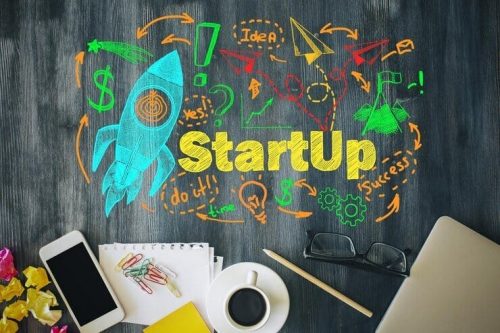Femi, an enthusiastic 21-year-old Nigerian youth, thought of finding a solution to the problem of unprofessionalism, lackluster attitude, lateness and delay by some Nigerian artisans. He thought if he could build a service that recommends trustworthy and professional artisans, it would reduce the disappointment of service users.
However, he had gone weeks into developing his idea and by the time he decided to research his idea, he discovered that 7 other founders had launched the same idea as far as 7 years back.
Femi was shocked and startled, as he continued to read the journey of his potential competitors while his zeal began to dwindle.
What to know about Startups
The truth is, that some startup ideas are not necessarily fresh. Do not be surprised if you google your idea and discover that 10 other startup owners have embarked on the same idea. Do not be discouraged.
Your aim is to improve your service and make it a unique option and best offering to your target audience. It’s a capitalist world and there will always be competition and the presence of old players in the system.
Launching a startup can be a daunting task, but it can also be one of the most rewarding things you can do for yourself and service users. Whether you have a great idea for a product or service or you simply want to pursue your passion, there are a few steps you can take to kickstart your startup journey.
Remember, it is best to always take one step at a time and not allow your passion to override market realities.
Here’s a summary of the five key startup stages, and how you transition to the next one.
Understanding the 5 Key Stages of Startup Success in 2024
1. Find the problem and a solution (Ideation Stage)
Every good product solves a problem. Specificity is key when it comes to narrowing down a problem and searching for a solution. Discover a niche, find the problem in that niche, and draw up a solution to address the problem.
Expectedly, businesses don’t just boom the instant you have your “haha💡” moment, but having a concise and effective solution to an actual problem is the first important step.
We believe this step should, in most cases, take up a lot of your time. This is the stage where you ask a lot of questions. Gathering answers, responses, and feedback from people or potential players in the problem you are trying to fix will aid your knowledge of the problem you are trying to solve. The success of your research over time will also inform your decision to either continue with your vision or lay it down to save future disappointment.
However, these are mainly globally accepted practices, you can also defy the norm, and go on and kickstart your startup if you believe in your vision against every odd.
Keep researching and modifying until you come up with possible answers to the problem.
2. Building an MVP
Upon the discovery of potential solutions to your problem, your next step would be to test your solutions by building an MVP also known as Minimum Viable Product. An MVP is a product used to satisfy customer needs and demands before developing an advanced featured product. In this stage, you would be testing your product utilizing your target audience to prove it meets the need.
The aim here is to illustrate your ultimate solution without breaking the bank in the process. This stage may require some amount of money, initial funding by yourself, friends and family, or angel investors. The essence is to prove to the barest minimum that your product solves an actual problem and is worth investing in.
You might as well recruit a few skillful hands to help in building your MVP.
3. Fitting your Product for the Market
After you have proven that your MVP solves a problem, it is time to spread the word and hit the market. Make a big announcement and probably disrupt the market.
However, this process entails more than a grand entry as you’ll need to develop what is referred to as a product-market fit, which means optimizing your product to meet the demands of your target audience in such a way that it addresses their pain points.
This stage is all about testing, receiving feedback, improving your product, and testing again. It is expected that this stage will gulp a precious amount of the time you spend developing your product.
How will you know when your product is becoming fitted to the market?
- Your product will begin to gain traction
- You’ll start to record customer retention
Customer retention is understood to be the situation by which product-market fit is measured when users return to use your product and if they recommend it to friends and family.
In this process, you would be considering raising more funds, engaging all of your channels to experiment and discover what is working and what it is not. This stage is also known as validating.
4. Scaling
Scalability is an essential component of any successful startup. Now that you have succeeded in building a product that works and is fit for the market while engaging in best marketing practices, it is time to grow your startup product into the potential you desire.
The essence is to fortify your business against imminent competitors, unforeseen market challenges and a rapidly changing environment.
How will I know when my product is ready to scale?
You may get ready to scale when:
- When your channels start hitting their limits with customer orders or an influx of customers.
- You have a proven concept and reliable infrastructure
- You have a strong inflow of cash and repeatable sales
- You surpass previous goals
How will I scale my startup?
There is no one-size-fits-all for this stage. However, you may:
- Reflect on current processes
- Engage in the next round of funding
- Invest in technology
- Deploy a new marketing strategy or expand marketing channels
- Launch an associated product and service
- Hire experts and expand your team
5. Sustainability
Alas, if you have reached this stage, you and your team have achieved incredible feats and beaten the insurmountable.
This would establish the fact that you have gained a reasonable foothold in the market, you have a good customer retention rate and are making expected profits for the sustainability of your product such that it easily attracts people and financial resources.
In fact, at this stage, you or investors may decide to exit the company or continue with the company since it has proven to be a sustainable business.
Conclusion
Launching a startup and business idea obviously is no child’s play, but with the right information, adoption of best practices, and adequate resources, success is inevitable.
It is also possible that you are overwhelmed with the stage of development such that you lose sight of the vision, this is why you need to understand your startup journey, helping you stay focused, and motivated when it becomes tough.
Drawing and learning from the experiences and insights of experts and predecessors, could also make the whole process much easier – and greatly improve your chances of success.









